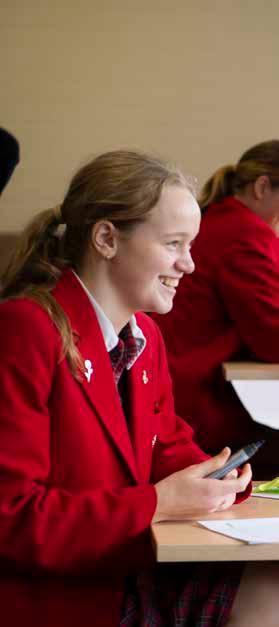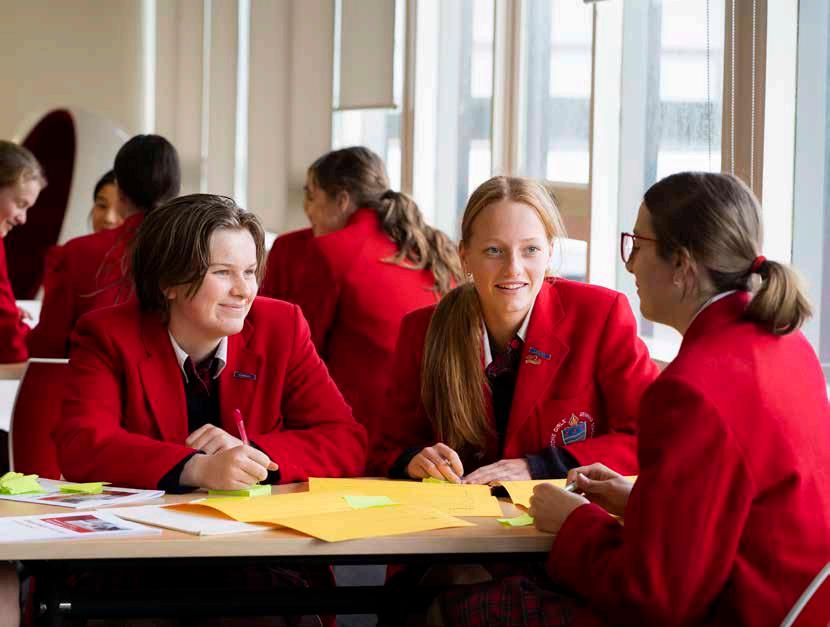
3 minute read
Community by Design
from Well Red 2022
Gifted Education theorist, Joseph Renzulli, holds the belief that highly able students benefit from three types of enrichment: general exploratory activities, group training activities and investigations of real problems. Through our latest initiative, Community by Design, a human centred design challenge, students were engaged with all aspects of Renzulli’s enrichment triad model. The event’s theme focused on the pertinent issue of social isolation and loneliness in communities, which provided students the opportunity to tackle a problem that was both tangible, and relevant to their lived experience.
Schools from our local Bayside community were invited to nominate highly able students in Years 9 and 10 to attend Mentone Girls’ inaugural Enrichment Symposium. Students heard from Dr Michelle Lim, Chairperson and Scientific Chair of Ending Loneliness Together, Director of Social Health and Wellbeing (SHAW) Laboratory, Swinburne University, and co-author of the Australian Loneliness Report (2018), together with a panel of community leaders from law enforcement, social work and international development, on impacts of loneliness in our community. Working in mixed groups, students then followed the Stanford School Design Thinking Framework to develop a solution to an issue arising from the morning’s discussions. The first step of the framework was to empathise with one’s potential audience or users. Hearing from experts and those working at the coalface brought rigour and context to the students’ exploration of the issue. The open-ended nature of the task allowed the groups to synthesise their findings from the panel using various lenses and ultimately define a specific problem the team wished to address. One team posed the question, “How might we provide people with disabilities access to public spaces and events so that they feel included in their community?”. As students progressed through the design stages brainstorming ideas and prototyping solutions, no restrictions were placed on their process or creativity. When we offer students a sense of agency, and the freedom to test their capabilities, their performance often exceeds expectations, as was the case on the day.
Equally important to offering exploratory problem-based challenges is providing gifted students with opportunities to collaborate with like-minded students. Highly able students thrive when they are given time to mix with others who share their capability and enthusiasm for learning. Students often find it a relief not to disguise or underplay these attributes and aspects of themselves. One participant reflected, “….we collaborated on different parts and realised that many of us attending Enrichment opportunities like this maybe more like

minded than our peers at school.” The safe social environment is exemplified by others’ feedback that, “We were all very inclusive, even with lots of opinionated ideas”; “I felt comfortable working with everyone towards a common goal”; and “I made new friends who are perhaps more similar to me”.
The best educational experiences are authentic, allowing students to engage with ‘real world’ problems and scenarios. As one student remarked, the Symposium “simulate[d] an actual work environment”. Another reflected, “It challenged our learning outside of the classroom and taught us skills that extend into the world after school.” Gifted students often have a highly developed sense of justice, or moral sensitivity, which makes social, human centred problem solving an ideal form of enrichment. By hearing real accounts of loneliness from Senior Constables Tania Stacey and Murray Stranger, together with insights on social marginalisation from Executive Officer of BayCISS, Rose Paduano and Youth Governor, Kergen Angel, students were given an unembellished picture of society as it was, yet they were also empowered with a conviction that they could alter the status quo.
It was great to see students come together from our neighbouring schools to collaborate, ideate and prototype potential solutions to real problems. The quality of students’ proposals to council was testament to the high level of creative thinking and engagement of participants. We look forward to future partnerships with schools in the Bayside area so that, together, we can offer activities that enrich our highly able students both socially and intellectually.
By Bridget Forster HEAD OF KERFERD LIBRARY AND Anna Hawthorne ENRICHMENT CO-ORDINATOR










